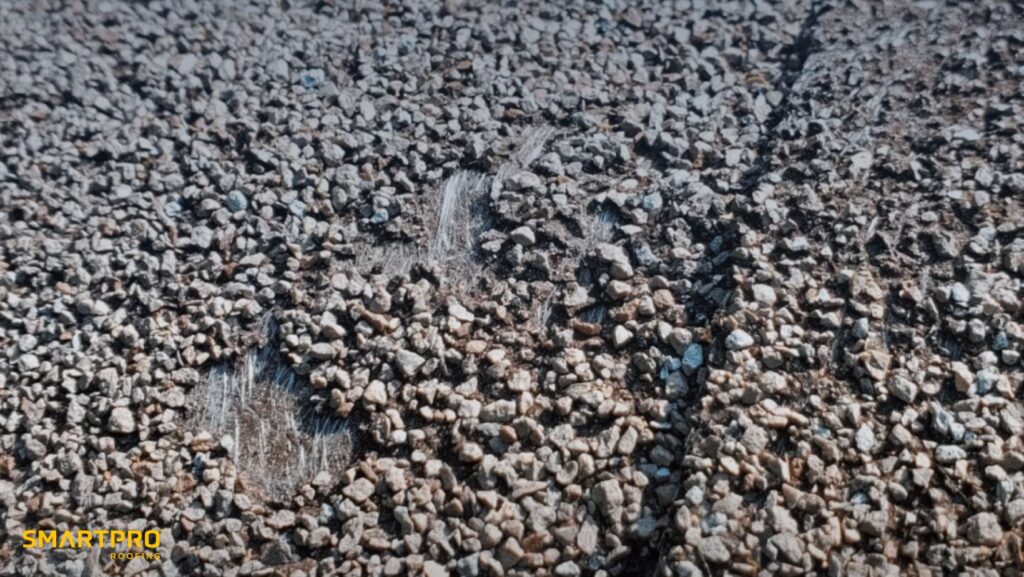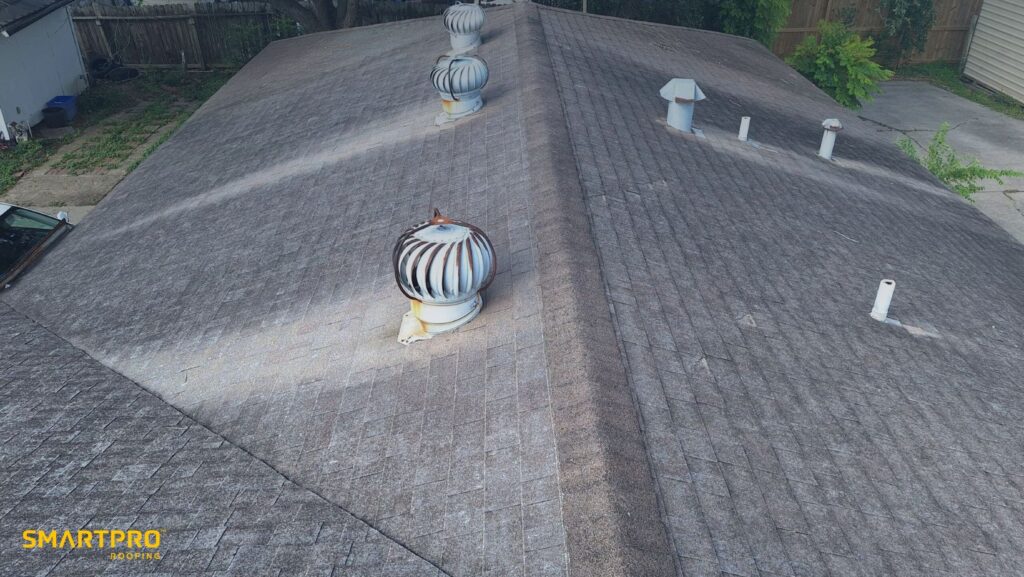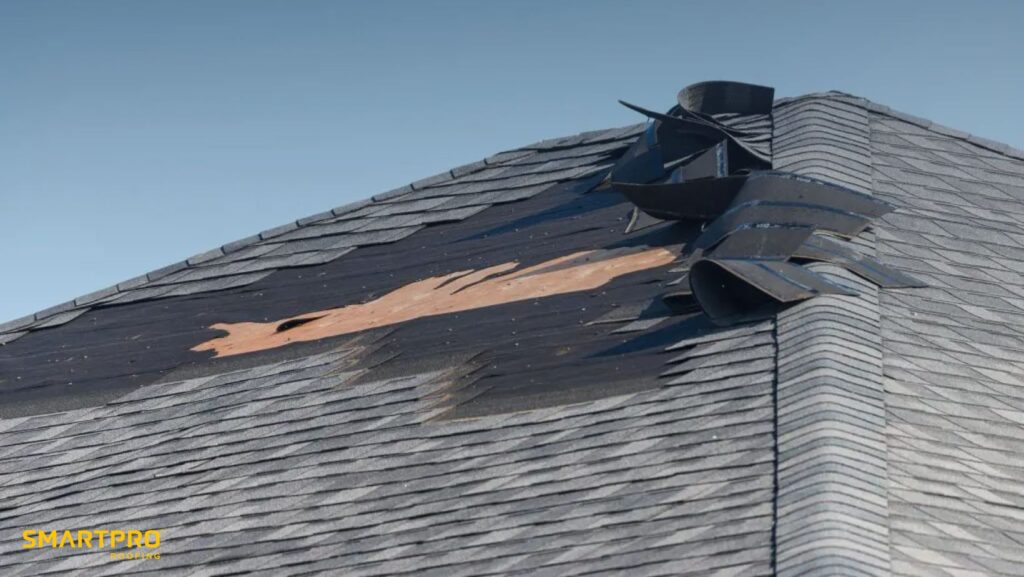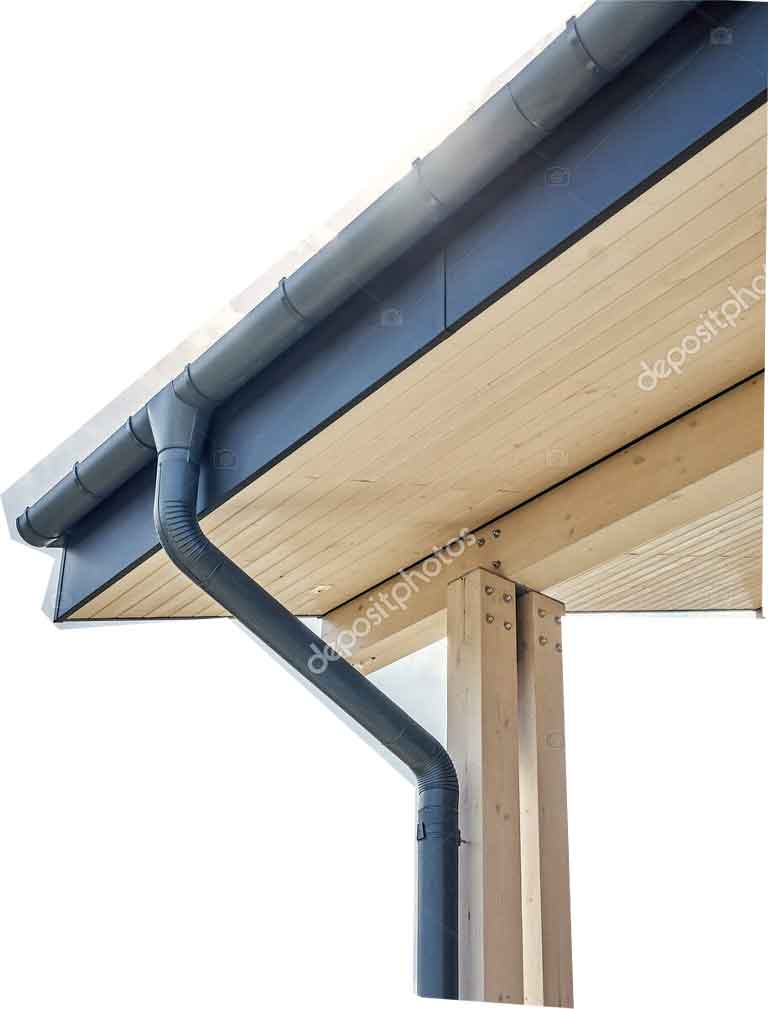A roof in Florida faces some of the most extreme weather conditions in the country. From intense heat to persistent humidity, these factors significantly impact the durability, lifespan, and performance of asphalt shingles. Many Florida homeowners wonder how long their shingles will last and what steps can be taken to protect their investment. This article explores how heat and humidity affect asphalt shingle roofs, what signs of wear to watch for, and how to ensure your roof remains strong against Florida’s climate.
 Heat and humidity are a powerful duo that affects your roof in multiple ways. UV rays from the sun break down the surface of asphalt shingles, leading to granule loss and weakening the protective layer. At the same time, high humidity levels in Florida allow moisture to seep into the roof’s layers, creating conditions for mildew, rot, and shingle deterioration.
Humidity can cause roofing adhesives to lose their strength, while combined with high humidity and heat buildup, shingles may become brittle. This not only weakens roofing but also shortens the lifespan of your roof. Asphalt shingles Florida heat and Florida’s humidity together create a unique set of challenges that Florida roofs face daily.
Heat and humidity are a powerful duo that affects your roof in multiple ways. UV rays from the sun break down the surface of asphalt shingles, leading to granule loss and weakening the protective layer. At the same time, high humidity levels in Florida allow moisture to seep into the roof’s layers, creating conditions for mildew, rot, and shingle deterioration.
Humidity can cause roofing adhesives to lose their strength, while combined with high humidity and heat buildup, shingles may become brittle. This not only weakens roofing but also shortens the lifespan of your roof. Asphalt shingles Florida heat and Florida’s humidity together create a unique set of challenges that Florida roofs face daily.
 Humidity affects shingle roofs in several ways. Shingle roof problems humidity related include curling, granule loss, and weakening of adhesives. When humidity conditions persist, they trap moisture under shingles, which can cause rot and mildew.
Humidity can also cause the structural integrity of your roof to weaken over time. Florida humidity combined with high humidity levels in Florida weather creates a constant cycle of dampness and heat, which accelerates deterioration. This is why roofing services recommend proper roof ventilation to keep your roof dry and extend its longevity.
Humidity affects shingle roofs in several ways. Shingle roof problems humidity related include curling, granule loss, and weakening of adhesives. When humidity conditions persist, they trap moisture under shingles, which can cause rot and mildew.
Humidity can also cause the structural integrity of your roof to weaken over time. Florida humidity combined with high humidity levels in Florida weather creates a constant cycle of dampness and heat, which accelerates deterioration. This is why roofing services recommend proper roof ventilation to keep your roof dry and extend its longevity.
 Florida weather brings frequent storms that create additional roof damage risks. High winds can curl shingles, while heavy rains increase humidity levels that already stress asphalt shingles. Storm damage often requires urgent repair to prevent leaks and maintain the structural integrity of your roof.
Homeowners may find that roofing materials become brittle after prolonged exposure to Florida heat, making storm damage even worse. Roofing companies offering emergency roofing services are crucial for keeping a Florida roof protected during hurricane season and beyond.
Florida weather brings frequent storms that create additional roof damage risks. High winds can curl shingles, while heavy rains increase humidity levels that already stress asphalt shingles. Storm damage often requires urgent repair to prevent leaks and maintain the structural integrity of your roof.
Homeowners may find that roofing materials become brittle after prolonged exposure to Florida heat, making storm damage even worse. Roofing companies offering emergency roofing services are crucial for keeping a Florida roof protected during hurricane season and beyond.
Why are Florida’s weather conditions tough on roofs
Florida weather is well known for its relentless heat, heavy rains, and high humidity levels. These conditions put a lot of pressure on roofing material, particularly asphalt shingles, which can weaken over time. Prolonged exposure to the sun causes shingles to expand and contract, while excess moisture from humidity can also trap moisture in the roof system. For a homeowner, this combination often means more frequent roof inspection, roof repair, and sometimes early replacement. Roofing companies often recommend using high-quality asphalt shingles designed for Florida heat to help reduce heat accumulation and resist humidity damage.How does heat and humidity affect your roof in Florida
 Heat and humidity are a powerful duo that affects your roof in multiple ways. UV rays from the sun break down the surface of asphalt shingles, leading to granule loss and weakening the protective layer. At the same time, high humidity levels in Florida allow moisture to seep into the roof’s layers, creating conditions for mildew, rot, and shingle deterioration.
Humidity can cause roofing adhesives to lose their strength, while combined with high humidity and heat buildup, shingles may become brittle. This not only weakens roofing but also shortens the lifespan of your roof. Asphalt shingles Florida heat and Florida’s humidity together create a unique set of challenges that Florida roofs face daily.
Heat and humidity are a powerful duo that affects your roof in multiple ways. UV rays from the sun break down the surface of asphalt shingles, leading to granule loss and weakening the protective layer. At the same time, high humidity levels in Florida allow moisture to seep into the roof’s layers, creating conditions for mildew, rot, and shingle deterioration.
Humidity can cause roofing adhesives to lose their strength, while combined with high humidity and heat buildup, shingles may become brittle. This not only weakens roofing but also shortens the lifespan of your roof. Asphalt shingles Florida heat and Florida’s humidity together create a unique set of challenges that Florida roofs face daily.
What is the lifespan of asphalt shingles in Florida
Shingle lifespan Florida is typically shorter than in cooler regions. While asphalt shingles may last 20–30 years in other states, the lifespan of your roof in Florida can be closer to 15–20 years due to relentless heat and humidity conditions. The intense heat buildup and humidity can cause roof damage much sooner than expected. Without proper roof ventilation, a roof in Florida may experience premature shingle deterioration, curling, and even rot. Roofing contractors often stress the importance of proper roof ventilation and regular inspection to extend the life of your roof despite Florida weather.Why does UV exposure weaken roofing materials
UV exposure is one of the biggest factors that weaken roofing. Over time, UV rays cause asphalt shingles to become brittle, leading to cracking and granule loss. These granules are essential for protecting shingles from further UV damage, so once they are gone, deterioration speeds up. A Florida roof under constant sun will experience more wear and tear compared to roofs in shaded or cooler regions. Homeowners who live in Florida should schedule regular inspections to spot signs of wear early and address issues before they escalate. Roofing materials like metal roof or tile roofing often last longer in such climates because of their resistance to UV damage.What common roofing materials perform best in Florida
Common roofing materials in Florida include asphalt shingles, tile roofing, metal roof options, and flat roofs. Asphalt shingles are popular for their affordability, but they require more maintenance due to the effects of humidity on asphalt shingle roofs. Tile is durable and performs well in humid conditions, though it can be costly. Metal roof systems are increasingly popular because they help reduce the heat inside homes and resist storm damage better than conventional shingles. Roofing contractors often recommend tile or metal for long-term durability, though asphalt shingles designed to withstand Florida weather can still provide good protection if maintained properly.How does humidity affect shingle roofs
 Humidity affects shingle roofs in several ways. Shingle roof problems humidity related include curling, granule loss, and weakening of adhesives. When humidity conditions persist, they trap moisture under shingles, which can cause rot and mildew.
Humidity can also cause the structural integrity of your roof to weaken over time. Florida humidity combined with high humidity levels in Florida weather creates a constant cycle of dampness and heat, which accelerates deterioration. This is why roofing services recommend proper roof ventilation to keep your roof dry and extend its longevity.
Humidity affects shingle roofs in several ways. Shingle roof problems humidity related include curling, granule loss, and weakening of adhesives. When humidity conditions persist, they trap moisture under shingles, which can cause rot and mildew.
Humidity can also cause the structural integrity of your roof to weaken over time. Florida humidity combined with high humidity levels in Florida weather creates a constant cycle of dampness and heat, which accelerates deterioration. This is why roofing services recommend proper roof ventilation to keep your roof dry and extend its longevity.
Why is roof ventilation important in Florida
A roof has adequate ventilation when air can move freely through the attic and vent systems. Proper roof ventilation helps regulate temperature, reduce energy costs, and prevent humidity buildup that can trap moisture under shingles. Without ventilation, the attic becomes a hotspot of heat accumulation, leading to early deterioration of asphalt shingles. Ventilation is also critical in reducing humidity effects that weaken roofing adhesives and cause shingles to curl. A roofing contractor can ensure your roof has adequate ventilation, helping prolong the life of your roof despite Florida’s heat and humidity.What are the signs of wear homeowners should watch for
Florida homeowners should regularly check for signs of wear like curling shingles, granule loss, leaks, or areas where shingles have become brittle. These signs indicate shingle deterioration and the need for roof repair. Other warning signs include mildew, rot, or areas where water may trap moisture under the roof. A free roof inspection by a trusted roofing contractor can help spot these issues before they escalate into costly roof damage. Regular inspections are essential in the Florida environment, where weather conditions accelerate wear and tear.How does storm damage worsen Florida roof problems
 Florida weather brings frequent storms that create additional roof damage risks. High winds can curl shingles, while heavy rains increase humidity levels that already stress asphalt shingles. Storm damage often requires urgent repair to prevent leaks and maintain the structural integrity of your roof.
Homeowners may find that roofing materials become brittle after prolonged exposure to Florida heat, making storm damage even worse. Roofing companies offering emergency roofing services are crucial for keeping a Florida roof protected during hurricane season and beyond.
Florida weather brings frequent storms that create additional roof damage risks. High winds can curl shingles, while heavy rains increase humidity levels that already stress asphalt shingles. Storm damage often requires urgent repair to prevent leaks and maintain the structural integrity of your roof.
Homeowners may find that roofing materials become brittle after prolonged exposure to Florida heat, making storm damage even worse. Roofing companies offering emergency roofing services are crucial for keeping a Florida roof protected during hurricane season and beyond.
Can regular maintenance extend the life of your roof
Yes, roof maintenance is the best way to extend the life of your roof. Scheduling a free roof inspection ensures early detection of problems like granule loss, curling, or weakened shingles. Regular maintenance helps reduce the heat effects on roofing materials and keeps your roof ready to handle humidity. Living in Florida means your roof faces extreme weather conditions. With proper roof maintenance, ventilation, and occasional repair, Florida homeowners can extend the lifespan of their roof and ensure their home is protected. Roofs can serve longer when homeowners work with experienced roofing contractors to ensure ongoing care.Summary of key points
- Asphalt shingles designed to withstand Florida heat provide durability, but lifespan is shorter due to humidity and sun exposure
- Florida roofs face intense UV rays, humidity levels, and storm damage that accelerate deterioration
- Humidity can cause roofing adhesives to lose strength and trap moisture, leading to mildew and rot
- Proper roof ventilation is essential to help reduce heat and extend the life of your roof
- Homeowners should look for signs of wear such as curling, granule loss, or brittle shingles
- Regular inspections and timely roof repair ensure your roof stays strong despite Florida’s weather conditions
- Common roofing materials like tile and metal roof often last longer, but asphalt shingles remain popular due to affordability
- Florida homeowners should schedule free roof inspection services to catch issues before they escalate











